Japanese garden nestling in Ochil Hills brought 'back to life'
- Published
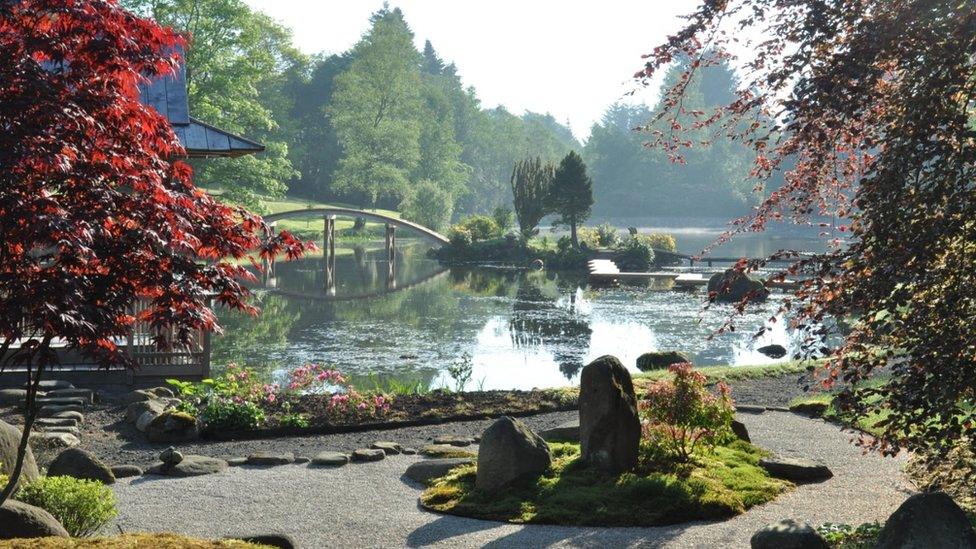
The garden has open to the public following restoration work
A historic Japanese garden destroyed by vandals in the 1960s is open to the public again.
The garden at Cowden Castle in Clackmannanshire - described as a "jewel in the Forth Valley" - was created in the 1900s by Scottish adventurer, Ella Christie, and one of Japan's first female garden designers, Taki Handa.
Thigh-deep in waders, one of the Japanese team who is part of the ongoing restoration of the garden is pulling weeds from the pond.
This is about creating a clear surface so the landscape can be reflected back.

Weeds have been cleared to the allow the landscape to reflect on the water
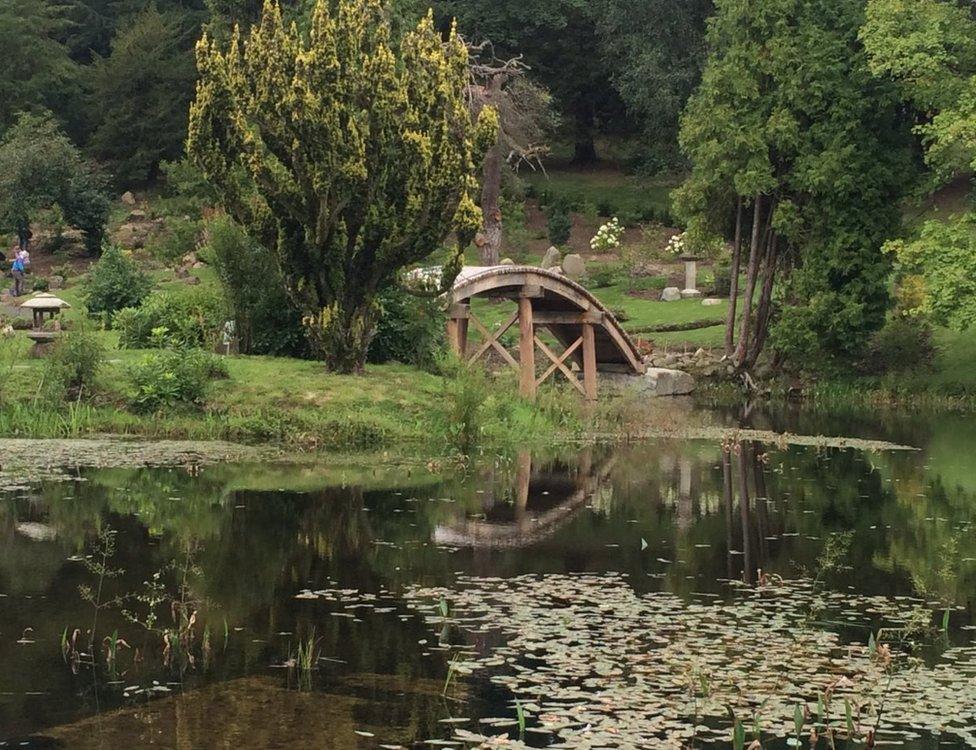
Bridges have been replaced
As part of the regeneration two bridges have been replaced - one gently curving, the other zig-zag, leading to a small island. There are peaceful views fringed by plants and trees, some of which are more than 100 years old.
"I felt I had a sort of moral obligation to do something about it," says Sara Stewart, whose great-great aunt, Ella Christie, commissioned the garden.
She remembers in childhood that it had become so overgrown that there was no path around the edge of the pond - just solid rhododendron and laurel.
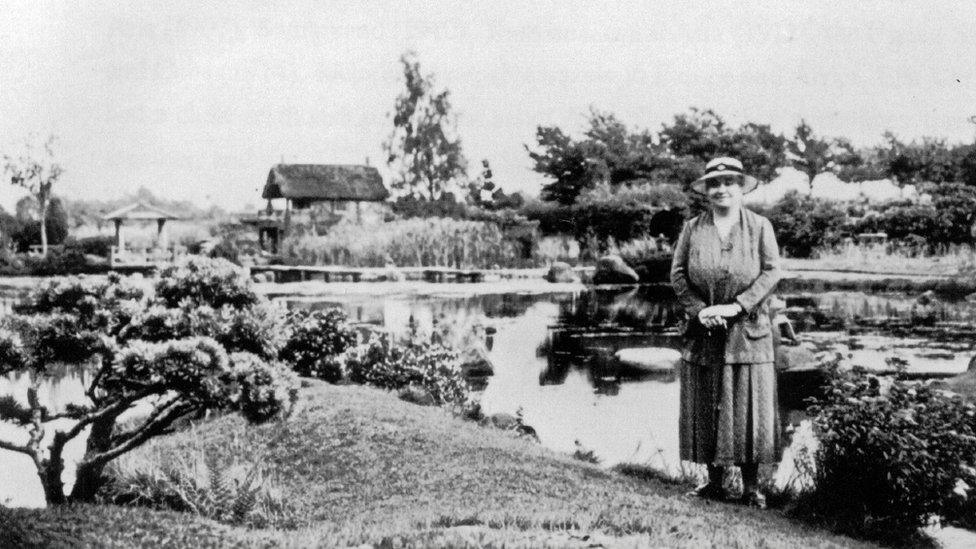
Ella Christie who commissioned the original garden, pictured in it in 1934
"She was a fearless spinster, a great traveller," explains Ms Stewart.
On a trip to Japan she became fascinated with the gardens there and vowed to convert part of her own estate on her return.
"She did it properly and hired a Japanese gardener and it's (also) the fact that the Japanese gardener was a woman and it's the only one in the world that's been accredited to a Japanese woman."
The garden may be pure Japan, but the backdrop is the Ochil Hills.
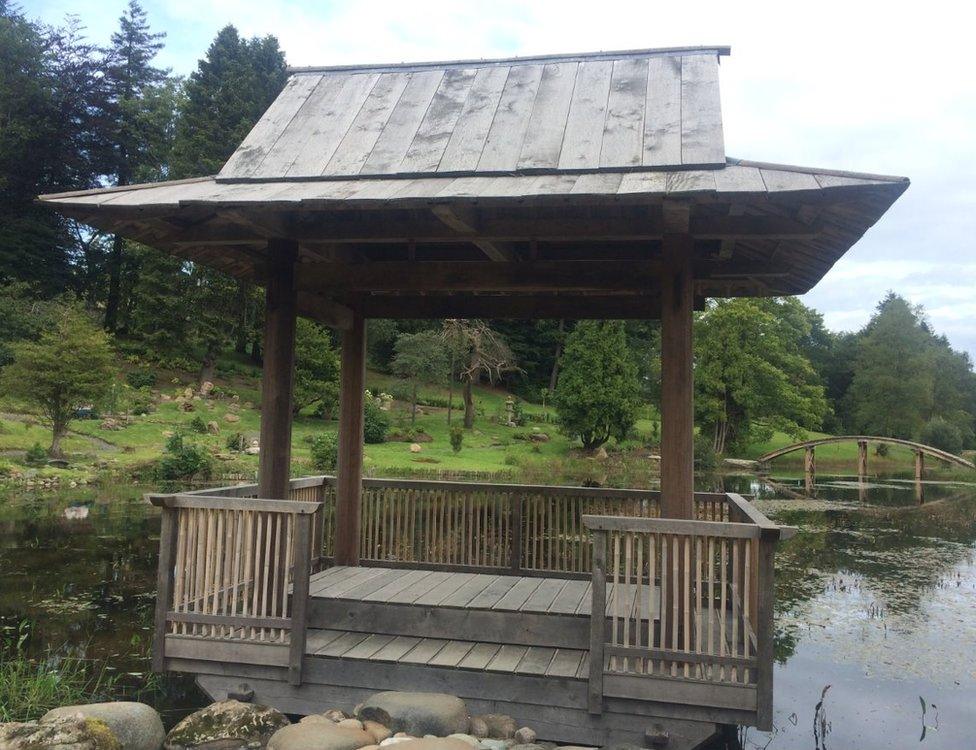
The team looked at old photographs and tried to recreate what they saw
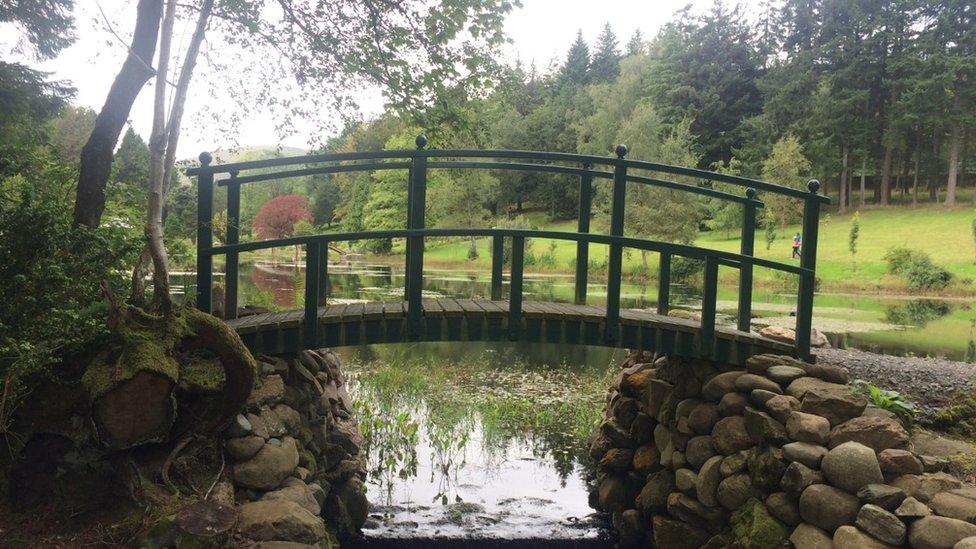
It was important to make the garden fit with its surroundings
"It was already a brilliant garden when it was built a hundred years ago," says Prof Masao Fukuhara from Osaka University of Arts, who is leading the team.
"But it had been in the care of nature for too long."
Working from old photographs of the site, the experts pinpointed where a particular view was in the garden, sometimes not easy because everything was so overgrown. They then cleared and restored to what they could see in the photographs.
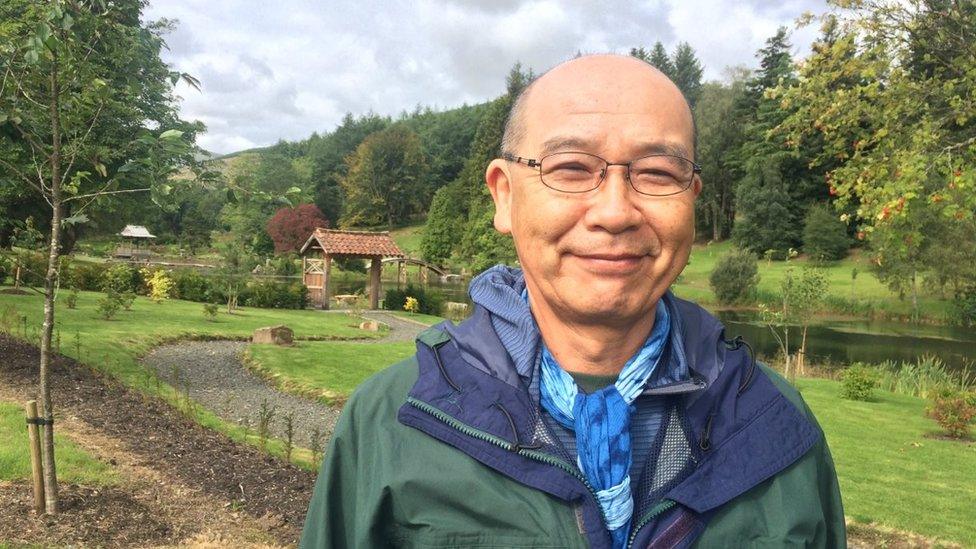
Prof Masao Fukuhara from Osaka University of Arts is leading the restoration team
"The location is brilliant," continues Prof Fukuhara.
"A beautiful, natural Japanese garden into a beautiful, natural Scottish landscape. You put two things together and make something really, really nice."
Much of the early work was about the placement of stones and other fixed points in the garden.
"It's all about form and structure and the colour green," says head gardener, Kate White.
"They bring the landscape into the garden by positioning it so that it feels like you're part of the wider countryside."
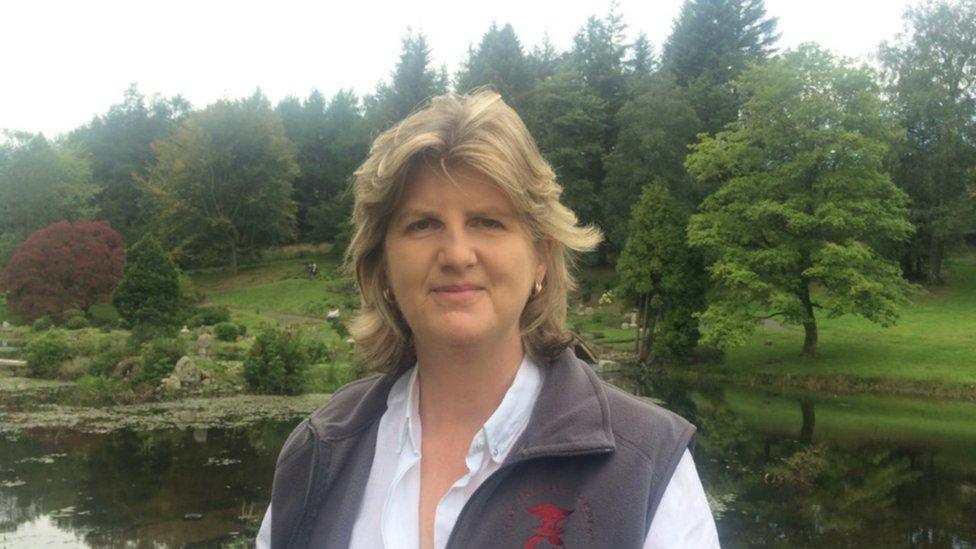
Sara Stewart says her great-great aunt, Ella Christie, would be happy to see the garden "come back to life"
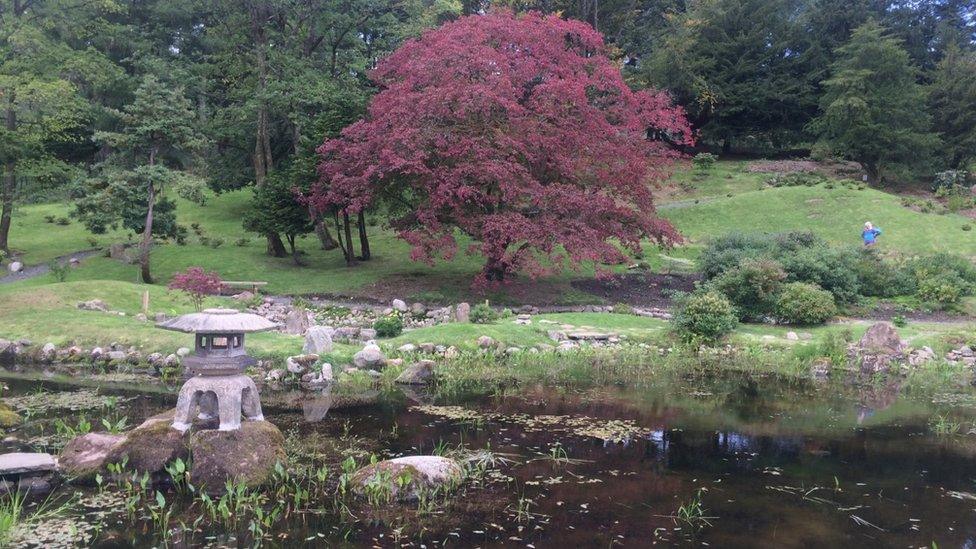
The restoration work is ongoing
There is still more work to be done here, the restoration work is about three-quarters done and it will change and mature with time.
So what does Sara Stewart think her great-great aunt would make of it?
"I think she should have been relieved that the garden had come back to life.
"It's a jewel in the Forth Valley and people love it and we need to finish the job."